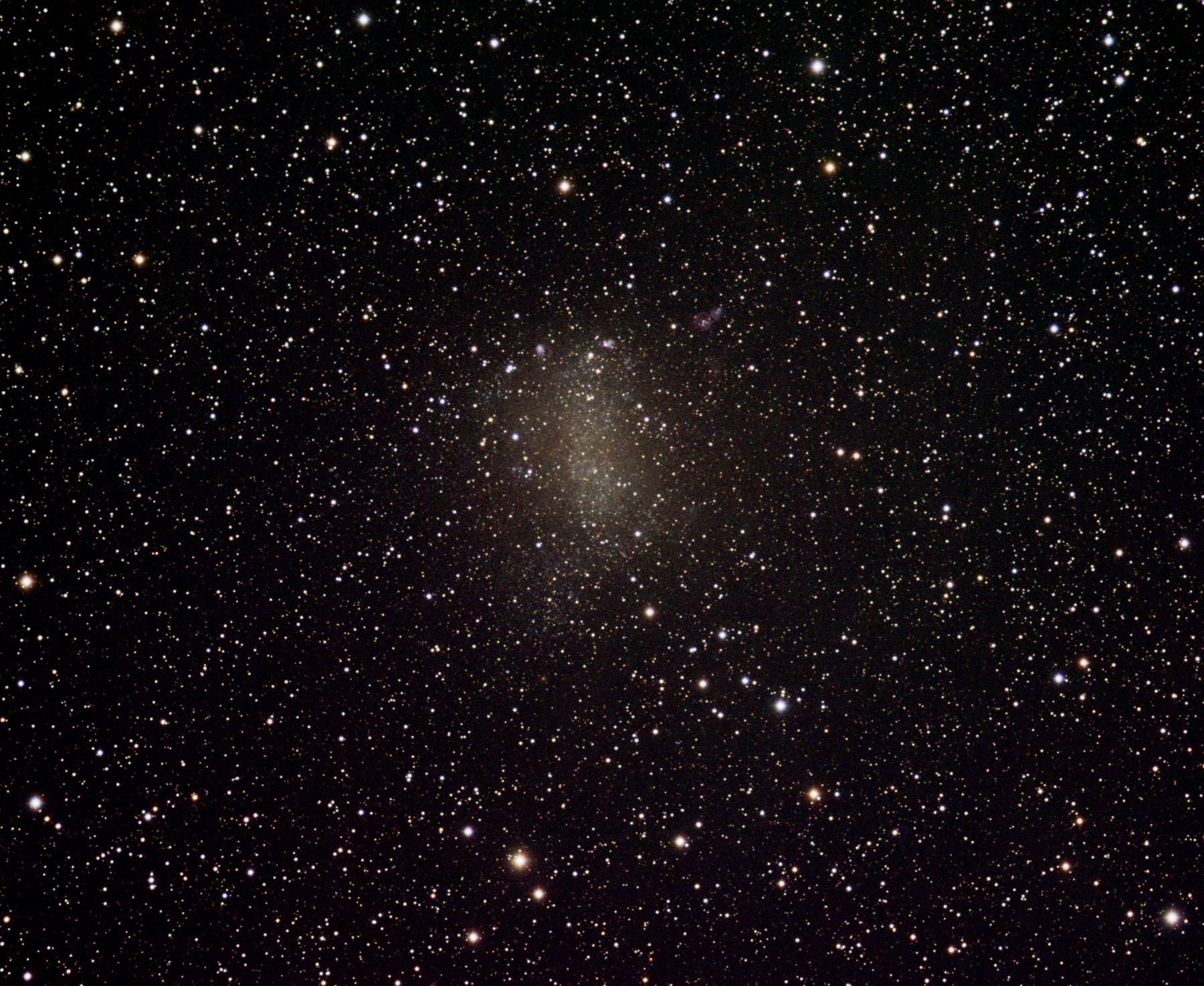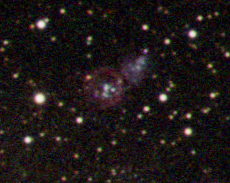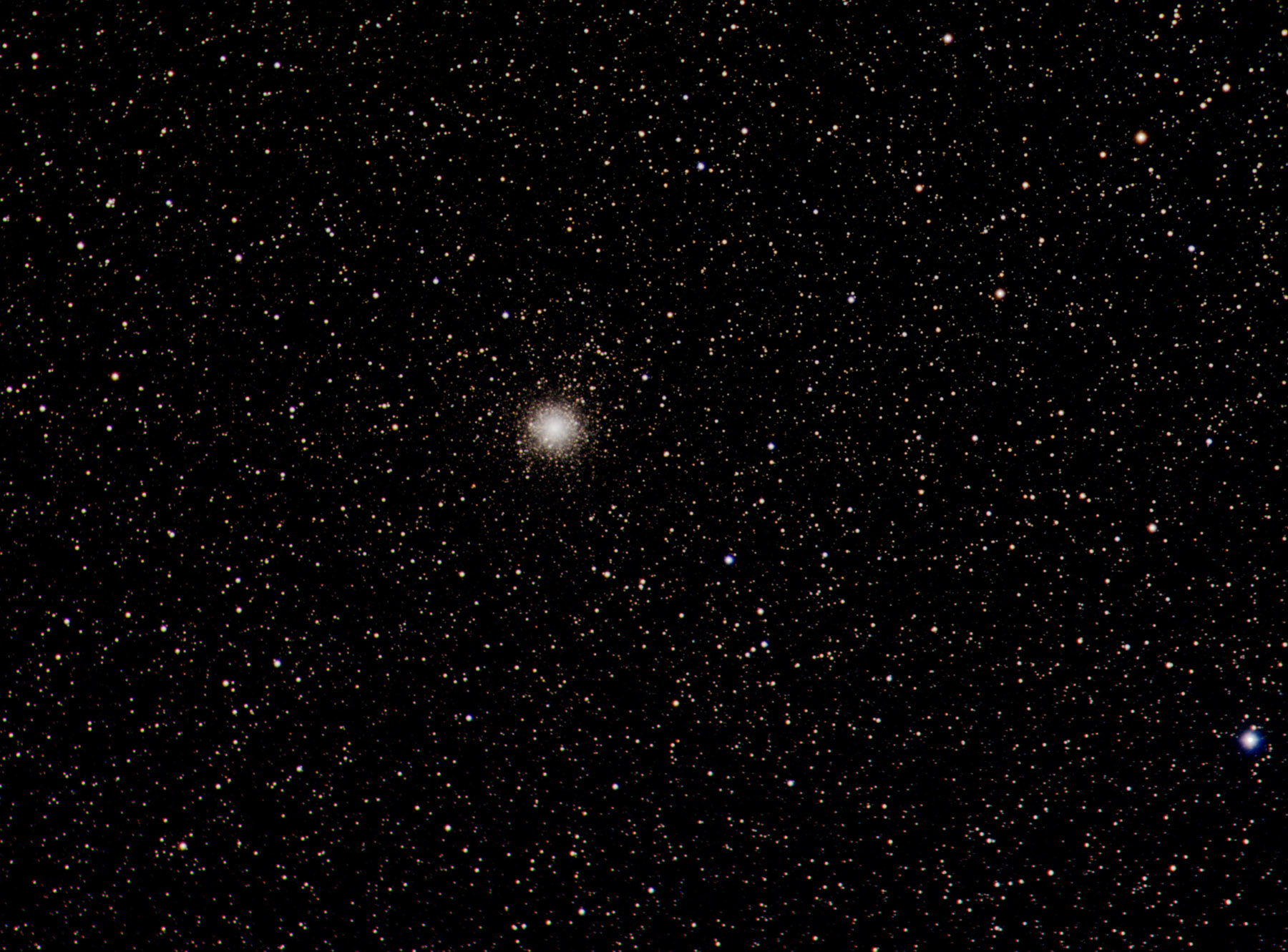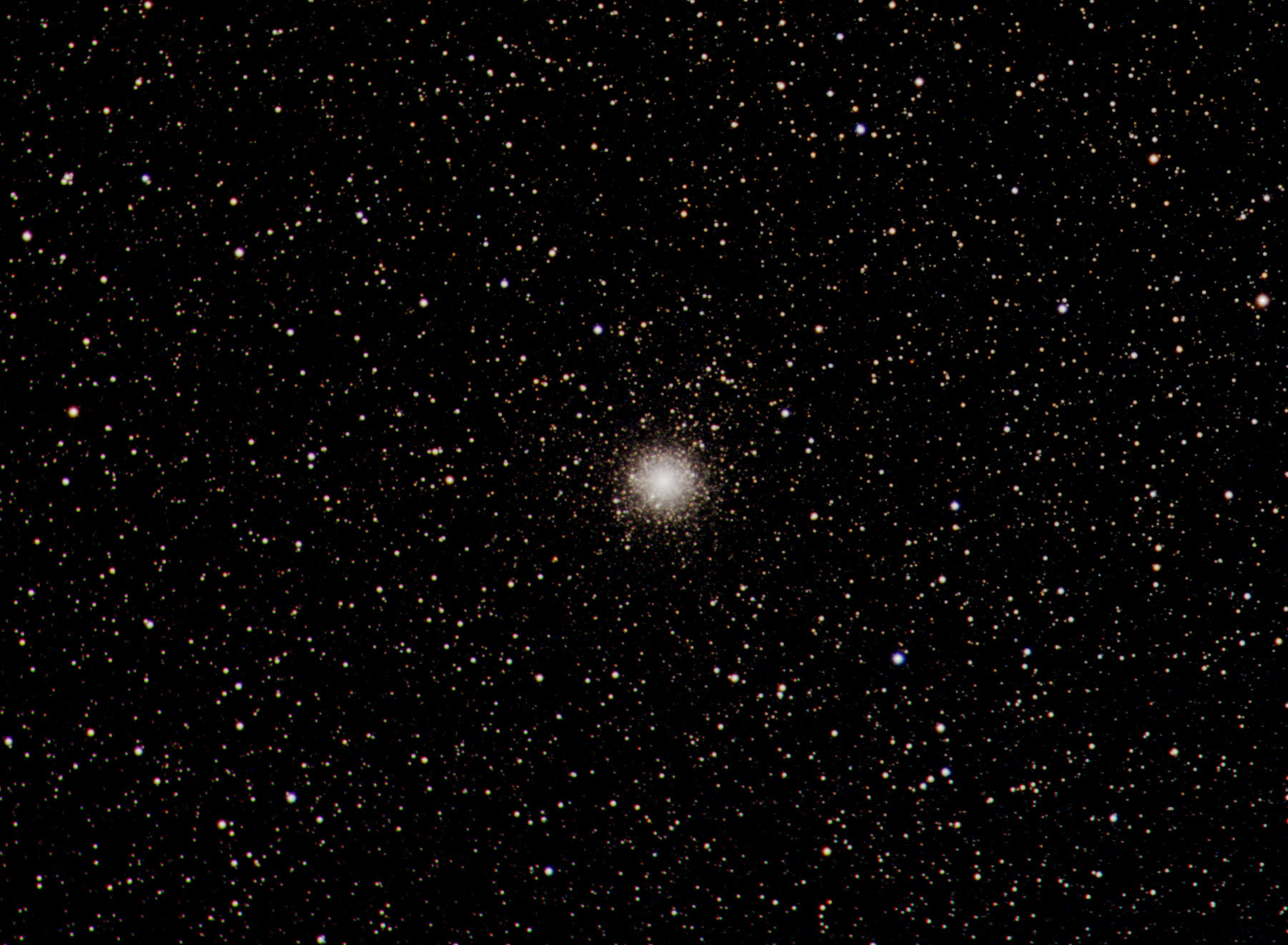
 | SOCO Blog |
11 August 2015
GALACTIC NEIGHBORS IN SAGITTARIUS
When we think of deep-sky objects in the constellation Sagittarius, what usually comes to mind are things like bright emission nebulas (like the Lagoon and Trifid Nebulas), golular clusters (like M 22), and open clusters (like M 21). These objects are all reidents of our Milky Way galaxy. However, there are some "deeper-sky" objects in Sagittarius that are not found within the Milky Way. In this installment of the Blog, I'll describe two of the more notable examples.
NGC 6822 lies on the western edge of Sagittarius outside of the main stream of the Milky Way, approximately 8 degrees east of the pair of double stars marking the eastern end of Capricornus— Debih (β Capricorni) and Giedi (α Capricorni). The two golden stars of Geidi (Prima Geidi and Secunda Geidi) are a beautiful sight in themselves, particularly in binoculars. NGC 6822 is a barred irregular galaxy with a structure and composition similar to the Small Magellanic Cloud. It is a member of the Milky Way's Local Group of galaxies, located 1.6 million LY away. Figure 1 shows an image of NGC 6822 that I acquired on the 8th and 9th of August. This color composite was created from twelve 5-minute exposures in each of the red, green and blue spectral bands. The galaxy is fairly large (around 16 × 14 arc-min) and bright (apparent magnitude 9.3), and stands out well from the foreground array of Milky Way stars.

Figure 1. Barnard's Galaxy (NGC 6822) in the constellation Sagittarius.
NGC 6822 has an interesting history. It was discovered by the American astronomer E. E. Barnard in 1884, and hence bears the name Barnard's Galaxy. Edwin Hubble published a detailed study of it in 1925, in which he identified 11 Cepheid variable stars. These stars allowed a relatively accurate estimate of the galaxy's distance to be made. This was the first time that the distance to an extragalactic object beyond the Magellanic Clouds was accurately determined. The estimate of 1.6 million LY was a surprise because, at the time, the size of the entire Universe was estimated to be only around 300,000 LY. Hubble went on to accurately measure the distances to the Andromeda Galaxy (M 31) and the Triangulum Galaxy (M 33), which confirmed that the Universe was a lot larger than previously thought.
Like the Magellanic Clouds, NGC 6822 contains numerous star clusters and nebulas. Two of the more interesting of these objects are just visible along the north-east edge of the galaxy in Figure 1. These are two large nebular structures tinged in red and blue. A magnified section of Figure 1 including these objects is provided in Figure 2. The red, circular structure is designated as HIII and is commonly called the Ring Nebula (not to be confused with M 57 in the constellation Lyra). The fan-shaped structure to the right of the Ring Nebula is designated HI and is called the Bubble Nebula (again, not to be confused with NGC 7635 in the constellation Cassiopeia). The Ring Nebula was extensively studied by C. A. Clayton (The Dynamics of the giant ring nebula Hubble III in NGC 6822, Monthly Notices of the Royal Astronomical Society, vol. 226, May 15, 1987, p. 493-504). The ring is actually a shell of ionized hydrogen glowing red in Hα emissions. The shell surrounds a tight cluster of blue-white giant stars that provide the ionizing energy for the gas shell. The shell is huge, with a diameter of around 390 LY. There is still debate as to the nature of this shell— is it a supernova remnant (like the Veil Nebula in Cygnus) or a bubble blown out in the surrounding hydrogen gas cloud by the stellar winds from the young stars at its center (like NGC 7635 in Cassiopeia).

Figure 2. Section of Figure 1 showing the Bubble Nebula (HI) and Ring Nebula (HIII).
Figure 3 shows an image of M 54 acquired on the 9th of August using the SOCO 120-mm refractor. This color composite was created from twenty 90-sec exposures in each of the red, green and blue spectral bands. M 54 is located around 1.5 degrees southeast of Ascella (Zeta Sagittarii). The bright bluish star near the bottom right corner in Figure 3 is HD 174632 (visual magnitude 6.64). An enlarged view of M 54 is presented in Figure 4.

Figure 3. Image of M 54 in Sagittarius acquired with the SOCO 120-mm telesscope.

Figure 4. An enlarged view of M 54 extracted from Figure 3.
Wait a minute— I was going to talk about extragalactic objects, not just a regular old globular cluster. Well, many astronomers now believe that M 54 is not just a globular cluster, but actually a more interesting object. This is all due to the discovery in 1994 of the Sagittarius Dwarf Elliptical Galaxy, or "Sag DEG". Sag DEG is the second-closest companion galaxy of our Milky Way galaxy (the closest is thought to be the Canis Major Dwarf Galaxy), even closer than the Magellanic Clouds. Being this close to the Milky Way has not been good for Sag DEG, though. Immense gravitational forces of the much larger Milky Way galaxy have stretched this initially elliptical galaxy into a loop circling our galaxy. It is thought that the Milky Way captured this small galaxy in the distant past, and its orbit has led to ten close encounters with the Milky Way (the most recent some 200 million years ago). Each encounter has tidally disrupted the smaller galaxy and has stripped stars and gas from it and added them to the Milky Way's disk. The next encounter will probably be its last, with the remainder of Sag DEG being absorbed by the Milky Way. In fact, some computer simulations suggest that these encounters between the two galaxies produced the spiral structure that the Milky Way now exhibits.
A number of distant objects (globular clusters) have been identified as belonging to Sag DEG. One of them, M 54, lies at what is thought to be the center of what is left of Sag DEG. Thus, some astronmers believe that M 54 is actually not a globular cluster at all but rather what is left of the core of that small galaxy. M 54 lies at an immense distance (85,000 LY), and at this distance it appears rather small (diameter of 12 arc-min). However, this is misleading— it is actually around 300 LY across. It contains the equivalent of 1.5 million solar masses, which represents about 1/40 of the mass still remaining in Sag DEG. Only the huge cluster Omega Centauri is bigger. Also, M 54 appears small because it is very condensed and does not have a pronounced halo of outlying stars like other globular clusters, as indicated in Figure 4.
The more we look at the objects in the night sky, the more variety we find in them. One of the great things about astronomy is that you can never run out of interesting things to look at.
 Return to SOCO Blog Page
Return to SOCO Blog Page
 Return to SOCO Main Page
Return to SOCO Main Page
Questions or comments? Email SOCO@cat-star.org